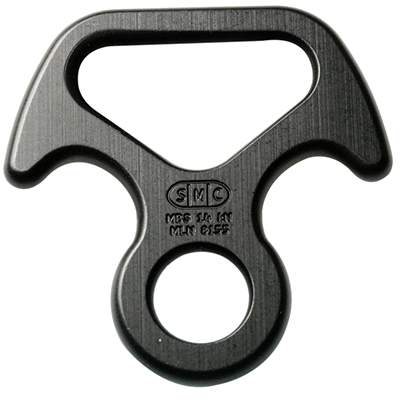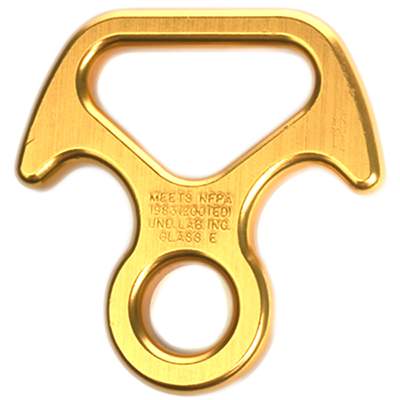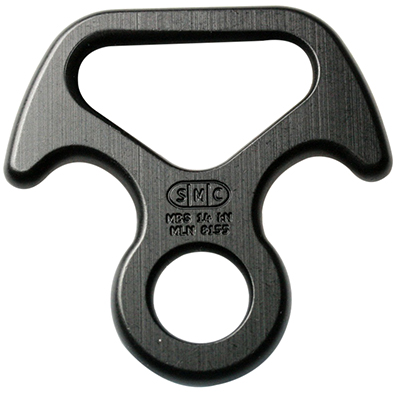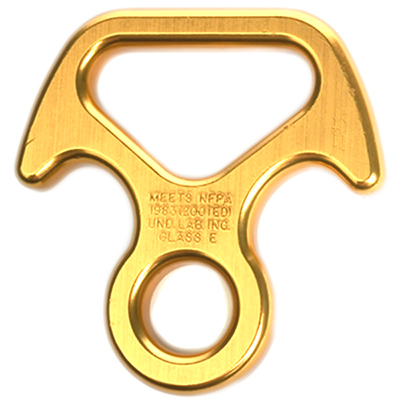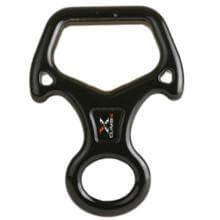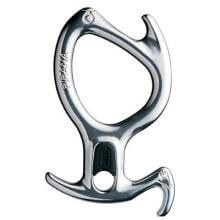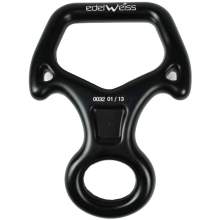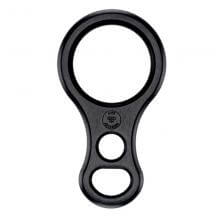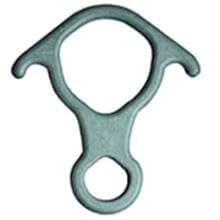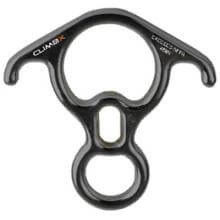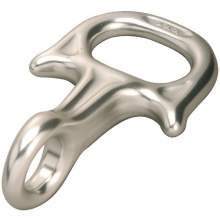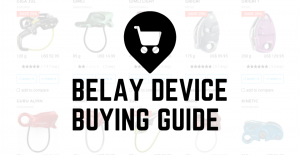How to use SMC figure 8 belay device, warnings, inspection, care and maintenance.
Escape 8
Description
Originally designed as a personal escape device to be used by firefighters in bailout situations, this ultra-light and compact descender is now the personal choice of countless members of SAR and Ski Patrol teams, law enforcement and military around the globe. Its compact size and lightweight makes it convenient to pack in a turnout coat or bail-out kit. For that matter just ask the growing number of savvy canyoneers who have chosen it as their descender, knowing that it is optimized for the smaller diameter ropes they've helped become so popular.
By using extensive computer analysis and field testing to optimize geometry we've designed this descender so that it works extremely well on single and double ropes up to 7.5 mm, and yet can be used on single ropes up to 12.5 mm. Single or double wrap allows the right amount of friction needed for a fast, yet controlled descent. The ears help to prevent accidental girth hitch. CNC machined from 3/8'' thick aircraft quality aluminum. Color choices are gold or black for tactical applications.
Originally designed as a personal escape device to be used by firefighters in bailout situations, this ultra-light and compact descender is now the personal choice of countless members of SAR and Ski Patrol teams, law enforcement and military around the globe. Its compact size and lightweight makes it convenient to pack in a turnout coat or bail-out kit. For that matter just ask the growing number of savvy canyoneers who have chosen it as their descender, knowing that it is optimized for the...
read moreRetail price
When you click a link below and then checkout online, no matter what you buy (climbing gear or not), we get a small commission that helps us keep this site up-to-date. Thanks!
Device Type  |
Figure 8 |
Weight (g)  |
48 g |
Belay Brake Assist  |
No |
| Rope Options | 1 or 2 ropes |
Guide Mode  |
No guide mode |
Teeth  |
No |
Rope Range (mm)  | 4.0 mm
- 12.5 mm
single: 4 - 12.5 double: 4 - 7.5 |
Certification  |
|
No reviews yet.


